Mexican honeysuckle (
Justicia spicigera) is one of those rare plants that will thrive in filtered shade while handling the intense heat of the summer in southern U.S. climates. Its orange, tubular flowers appear almost year-round, much to the delight of hummingbirds and gardeners alike. And its attractive light green foliage adds a tropical look to the landscape while providing color contrast for darker greens.
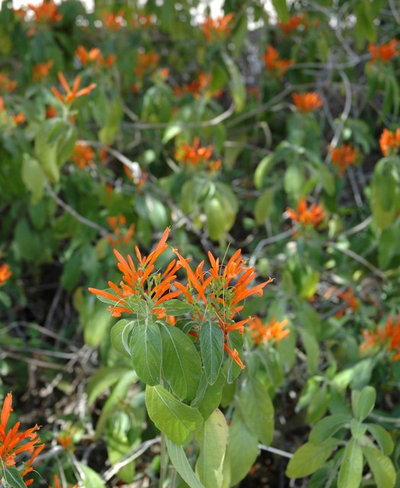
Noelle Johnson Landscape Consulting
Botanical name: Justicia spicigeraCommon names: Mexican honeysuckle, mohintli, fireracker plant, desert honeysuckle
Origin: Native to Mexico and Central and South America
Where it will grow: Hardy to 15 degrees Fahrenheit, or minus 9 degrees Celsius (USDA zone 8; find your zone)
Light requirement: Filtered shade is best, but can grow in full sun
Water requirement: Moderately drought-tolerant once established, but looks best when watered every week in spring through fall; water twice a month in winter
Mature size: 3 to 4 feet tall and wide
Benefits and tolerances: Moderately drought tolerant; attracts hummingbirds
Seasonal interest: Flowers throughout the year in zones 9 and above; in Zone 8, flowers appear in spring through fall
When to plant: Fall or spring
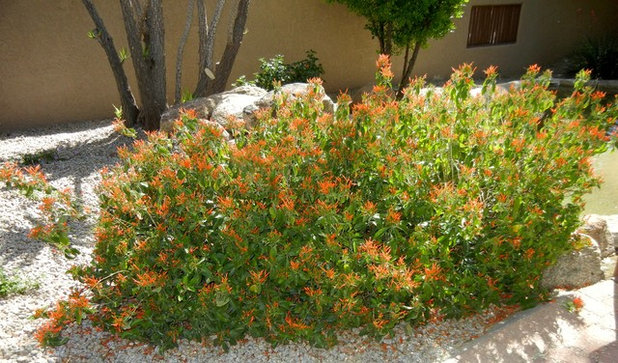
Noelle Johnson Landscape Consulting
Distinguishing traits. The long bloom season and ability to thrive in filtered shade are two of the many reasons Mexican honeysuckle is a highly desired plant in the drought-tolerant landscape. Finding plants that will not only thrive but flower in filtered shade in hot climates is rare, which makes Mexican honeysuckle the perfect choice to plant in shady areas where other plants may struggle to survive, much less produce flowers.
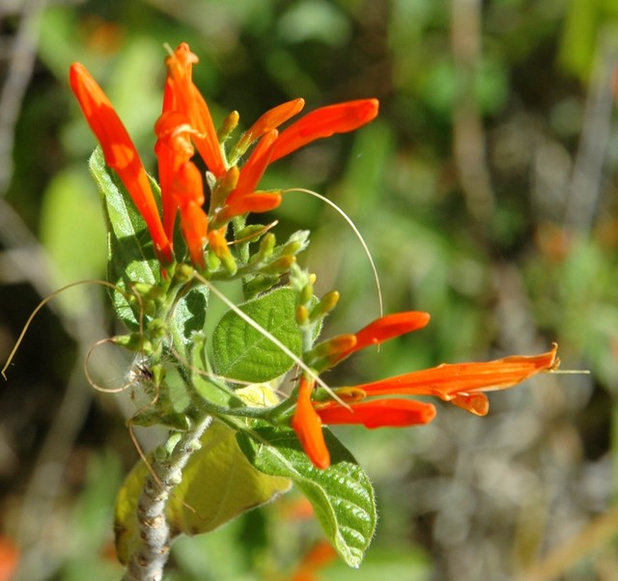
Noelle Johnson Landscape Consulting
This lovely Mexican native flowers throughout the year in frost-free climates. The flowers range in color from dark to light orange and are 1½ inches long. Their color and tubular shape are magnets for hummingbirds, who will be frequent visitors to any garden with this small shrub growing in it.
The bright green oval leaves are 3 inches long and have a slightly tropical appearance. They’re covered with tiny hairs, giving them a fuzzy texture.
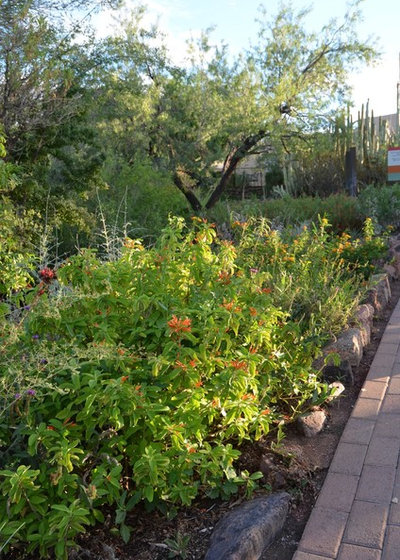
Noelle Johnson Landscape Consulting
How to use it. This medium-size shrub is perfect to plant underneath low windows without obstructing the view or along a pathway where its bright orange flowers can be enjoyed — by both human visitors and hummingbirds.
Add Mexican honeysuckle underneath trees that provide light, filtered shade, such as mesquite (
Prosopis spp.), blue palo verde (
Parkinsonia florida) and acacia (
Acacia spp.).

Noelle Johnson Landscape Consulting
This versatile shrub can also be planted in containers and along pools, and looks best in groups of three to five. To show off the orange flowers, team it with purple-flowering plants for maximum color contrast, such as purple trailing lantana (
Lantana montevidensis), desert ruellia
(
Ruellia peninsularis) and ‘Katie’ ruellia (
Ruellia brittoniana ‘Katie’).
Shown: Mexican honeysuckle growing alongside shrubby germander (
Teucrium fruticans)
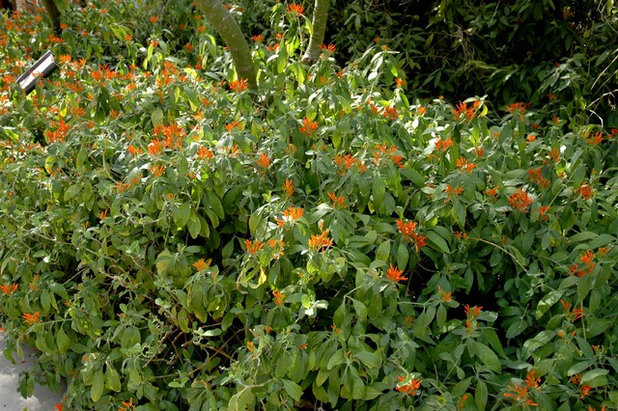
Noelle Johnson Landscape Consulting
Planting notes. Plant in well-drained soil — a mixture of native soil mixed with compost at a ratio of 1:1. In late winter, prune back any frost-damaged growth in zones 8 and 9. Lightly prune in early spring to promote more compact growth, but avoid pruning more than half of the shrub at a time.
Mexican honeysuckle does best when planted in dappled shade but can handle full sun, although the plants will be somewhat smaller in sunny spots.





